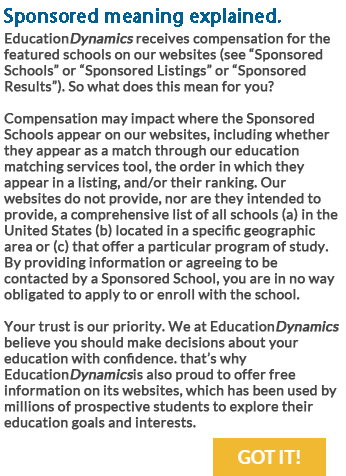Online Master's Degree
The fastest job growth rate is for those who hold a master’s degree, according to the U.S. Bureau of Labor Statistics (BLS), growing by nearly 17 percent from 2016 to 2026. While there are a number of different MBAs distance-based degree programs available to students including accounting, nursing, management, and information technology, the National Center for Educational Statistics (NCES) reported that more master’s degrees were awarded in business in 2016 than in any other field. Other fields that awarded high numbers of master’s degrees were education healthcare, and STEM.From 2000 to 2018 the number of people holding a master’s degree has doubled to 21 million, according to the U.S. Census Bureau. Online master degree programs can be part-time (hybrid programs) that are a blend of on-campus and online courses, or fully online programs that eliminate the need for students to commute to campus. Online degree programs can allow students to access classes and work on assignments at a time that is convenient to them.
Working professionals, busy parents, people who love to learn and career changers could find an online master’s degree program a good fit to their busy schedules allowing students to balance work, life commitments and study.
Southern New Hampshire University
- Some of the nation’s most affordable tuition rates, from a private, nonprofit, NEASC accredited university
- Qualified students with 2.5 GPA and up may receive up to $20K in grants & scholarships
- Multiple term start dates throughout the year. 24/7 online classroom access
- Offering over 200 online degree programs
Types of Online Master’s Degrees
A master’s degree can provide unique areas of study. Students can gain knowledge in a new field or to build more advanced skills in their current field. Types of master’s degrees can include:
- Master of Arts (M.A.): This degree can help students to build broad skills and is offered in areas such as education, history, political science and social studies.
- Master of Science (M.S.): In contrast to the M.A., a Master of Science degree is usually focused on science or math and could lead to a career in engineering, math or medicine.
- Master of Business Administration (MBA): This business degree, geared toward the corporate arena, can provide core business work in areas like accounting, finance, entrepreneurship or global management.
- Master of Fine Arts (M.F.A.): This interdisciplinary degree can provide an education in an art field, such as the visual arts or even creative writing. Some online master’s degree programs in fine art may include seminars and critiques.
- Master of Professional Studies (M.P.S.): This degree is typically offered in an applied field, such as emergency management, homeland security or information security, and is particularly useful for professionals already working in the field.
- Master of Education (M.Ed.): These programs may be offered in curriculum design, assessment and administration. Individuals who want to teach students typically work toward a master of arts in teaching (MAT) degree.
Is an Online Master’s Degree Worth It?
There are plenty of good reasons why someone might pursue a master’s degree. Here are just a few of them:
Earning a master’s degree may entitle you to a salary increase. Pay is generally higher for individuals with a master’s degree compared to those with lesser education. With weekly median wages of $1,380, master’s degree holders can earn $224 more weekly than those with only a bachelor’s degree (BLS). This becomes impressive when viewed from the perspective of an entire year. In fact, over a year, that weekly $224 accounts for a difference of $11,648 more.
Additionally, Lumina Foundation, an organization that promotes higher education for adults, notes that: “The difference in average earnings from college attendance is commonly referred to the college earnings premium. The earnings premium for bachelor’s degrees is particularly large: 134 percent. The earnings premium for graduate degrees (master’s, professional and doctorates) is 46 percent.“
The job market is predicted to need more master’s degree holders. With more organizations raising their educational standards, a master’s degree not only can help you to gain specialized knowledge, but help you be prepared for new challenges that can arise. About 18 percent of jobs are expected to require a master’s degree by 2022, according to the BLS.
A master’s degree can open the door to additional career opportunities. One common reason for pursuing a master’s degree is to become more qualified for advanced work and challenges on the job. Of note, 85 percent of people with a master’s degree worked in management positions, according to information from the BLS.
Pursuing a master’s for the passion of learning. Many people pursue a master’s simply because they are passionate about a subject and want further education.
20 Best Online Master’s Degree Programs 2019-20
The list of colleges below with the best online master’s programs was compiled using information from the Integrated Postsecondary Education Data System. This information was then ranked using various metrics such as average tuition, average financial aid awarded by the college, student service including placement services, and more. Take a more detailed look at our methodology to see why these online colleges can be your best options for a master’s degree.
https://www.liberty.edu
https://www.apus.edu
https://www.capella.edu
https://www.wgu.edu
https://www.purdueglobal.edu/campus-locations/davenport-iowa/0
https://www.gcu.edu
https://www.ucumberlands.edu
https://www.ecu.edu
https://www.waldenu.edu
https://www.lamar.edu
How Does an Online Master’s Degree Program Work?
Online master’s degree programs are often just as rigorous as on-campus programs. Since investing in your master’s education requires both time and money, it can help to know how these online programs work and what to look for before you enroll:
- Timeline for a master’s degree: Most online master’s degrees can be completed in two years, but some offer an accelerated format closer to 18 months. Bridge programs can give students the opportunity to complete a master’s degree and doctoral education at the same time, but typically take longer to complete. Some colleges may offer credits for work or life experience which may help to shorten the duration of your program.
- Learning options: Online master’s programs may use either synchronous or asynchronous learning. You may want to consider which type of learning would be more suitable for you:
Synchronous learning takes place in a real-time setting with live chats, live videoconferencing and other live components. Students must be available to log in at specific times in order to join live lectures that are being held.
Asynchronous learning implies that learning takes place at times that are convenient for the student. Students can complete activities, watch videos, post responses and share information any time they want — as long as they meet syllabus due dates, of course.
Most online master’s degree programs can be completed in two years, but some offer an accelerated format closer to 18 months. Bridge programs can give students the opportunity to complete a master’s degree program and doctoral education at the same time, but typically take longer to complete.
An application, application fee, resume, test scores, a short essay and letters of recommendation may be required for admission into an online master’s degree program. Some colleges may look at GMAT or GRE scores.
Most Popular Master’s Degrees to Earn Online
Data from the National Center for Education Statistics and the Bureau of Labor Statistics reveals the most popular online programs of study (by program count) at the master’s degree level include the following:
Popular Programs of Study | Median Salary | Projected Employment |
|---|---|---|
| Educational Leadership and Administration, General | $94,825 | 2,814,600 |
| Physician Assistant | $108,610 | 583,600 |
| Family Practice Nurse/Nursing | $90,260 | 1,182,800 |
| Occupational Therapy/Therapist | $84,270 | 948,000 |
| Higher Education/Higher Education Administration. | $94,340 | 1,188,600 |
| Speech-Language Pathology/Pathologist | $77,510 | 1,023,000 |
| Adult Health Nurse/Nursing | $90,260 | 1,478,500 |
| Registered Nursing, Nursing Administration, Nursing Research and Clinical Nursing, Other | $90,260 | 1,774,200 |
| Audiology/Audiologist and Speech-Language Pathology/Pathologist | $77,510 | 852,500 |
| Educational, Instructional, and Curriculum Supervision | $94,825 | 1,407,300 |
Integrated Postsecondary Education Data System (IPEDS) 2017-18, National Center for Education Statistics
Fastest-Growing Occupations that Require a Master’s Degree for Entry-Level Positions
The information below on the fastest-growing occupations for those with a master’s degree for entry-level employment comes from the BLS. These details could be important for adults looking for the online master’s programs that meet their career goals, but also seeking assurance about job availability after graduation.
Fastest-Growing Occupations | Annual Median Wage | Job Growth |
|---|---|---|
| Physician Assistants | $112,260 | 31% |
| Statisticians | $91,160 | 31% |
| Nurse Practitioners | $109,820 | 28% |
| Speech-Language Pathologists | $79,120 | 27% |
| Genetic Counselors | $81,880 | 27% |
| Nursing Instructors and Teachers, Postsecondary | $74,600 | 20% |
| Orthotists and Prosthetists | $68,410 | 20% |
| Occupational Therapists | $84,950 | 18% |
| Healthcare Social Workers | $56,750 | 17% |
| Education Administrators, Postsecondary | $95,410 | 7% |
Highest-Paying Master’s Degrees
Is a master’s degree worth it? Which master’s programs are likely to pay well? The information below on the highest-paying master’s degrees was compiled using data from the BLS and the National Center for Education Statistics. To make this even more helpful we have used additional factors such as total number of jobs projected in 10 years of all occupations matched to the major and the number of schools offering the degree online. For a more complete list of factors used, check out our methodology at the bottom of the page.
Explore Online Master’s Degree Programs
The buttons below lead to more information about various types of online master’s degree programs. This can give you an opportunity to explore several master’s degree programs and compare their outcomes.
See Methodology Information Here
Article Sources
- Asynchronous Learning, University of Michigan, Accessed October 2018, http://umich.edu/~elements/asyLearn/learning.htm
- Digital Learning Compass, Distance Education Enrollment Report, 2017, Accessed October 2018, https://www.onlinelearningsurvey.com/reports/digtiallearningcompassenrollment2017.pdf
- “It’s not just the money,” Philip Trostel, Lumina Foundation, Accessed October 2018, https://www.luminafoundation.org/files/resources/its-not-just-the-money.pdf
- Number of Master and Doctoral Degrees Doubles Among Population, United States Census Bureau, February 2019, https://www.census.gov/newsroom/press-releases/2019/education-degrees-double/
- Measuring the Value of Education, Bureau of Labor Statistics, Accessed October 2018, https://www.bls.gov/careeroutlook/2018/data-on-display/education-pays.htm
- “Profile of the Labor Force by Educational Attainment,” Vernon Brundage, Jr., U.S. Bureau of Labor Statistics, August 2017, https://www.bls.gov/spotlight/2017/
- “The Benefits of a Master’s Degree in Today’s Job Market,” Northeastern University, July 19, 2017, https://www.northeastern.edu/graduate/blog/master’s-degree-benefits/
- What Really is an MBA Degree? Northeastern University, Accessed October 2018, https://www.northeastern.edu/graduate/blog/what-is-an-mba-degree/


